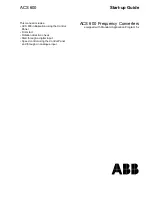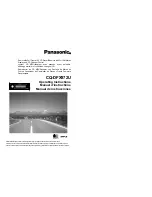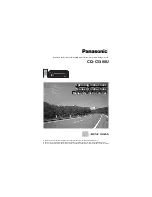
IQUDC30/IQUDC31/IQUDC32/IQUDC33
Operation Using the RollCall Control Panel
Issue 1 Rev 4
Page 71
© 2016 SAM
5.8.2.1
Status
The Status box shows the status of the corresponding output pair.
•
P: Audio pair routed out has two channels of PCM audio.
•
N: Audio pair routed out has two channels of non-PCM audio.
•
T: Audio pair routed out has two channels of test-tone audio.
•
S: Audio pair routed out has two channels of silent audio.
•
F: Audio pair routed out has two channels of forced mute (silent) audio.
5.8.3 Channel-based Routing Rules
Although channel-based routing of PCM data is possible with this module, an issue may occur
when channels contain non-PCM data, such as Dolby E. Because of the nature of this type of
data, a left/right pairing must remain together and be processed and routed as a pair. If not,
the encoded data can become corrupt or, most likely, meaningless. This is also true if two
channels of non-PCM data are routed together, but are not originally from the same encoding
source. Outputting an audio pair that comprises one channel of non-PCM and one of PCM
could potentially damage downstream audio equipment – it may become confused as to
whether the channels are PCM or non-PCM.
For these reasons, each time a selection is made in the shuffle matrix, the software will
compute a basic set of routing rules to guarantee that the output routing setup is valid. If the
output routing setup is invalid, the module automatically forces both channels of the output
pair to be muted. The status reporting will show “F” for force mute to indicate that this has
occurred.
The left-channel data type is shown in the left column, the right-channel data type is shown
across the top. The resultant status reported for the output pair is shown in the body of the
table.
P = PCM, N = non-PCM, S = silence, T = test tone, F= forced mute (silence).
To be recognized as valid non-PCM, both channels must:
•
come from the same output pair
•
have the left and right channels the correct way around
•
not have the phase inverted
Failing to meet these conditions will cause the pair to be muted and the Status to show “F”.
Note:
“T” (test tone) and “S” (silence) are both considered PCM audio. Therefore, according to
the channel-based routing rules, tone and silence can be routed with PCM audio. If only
one channel of the output pair is test tone or silence, its status as a pair is shown as “P”
(PCM).
Note:
Certain rules determine which combinations are valid. An invalid combination will force the
output to silence. The following table shows the rules that govern output pair combinations.
Non-PCM
PCM
Tone
Silence
Loss
Non-PCM
N or F
F
F
F
F
PCM
F
P
P
P
F
Tone
F
P
T
P
F
Silence
F
P
P
S
F
Loss
F
F
F
F
F
















































